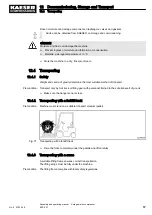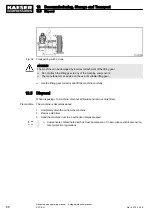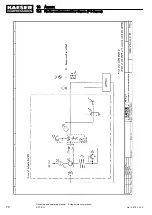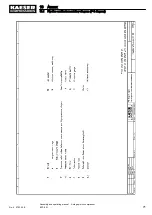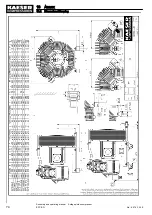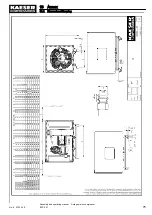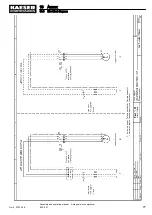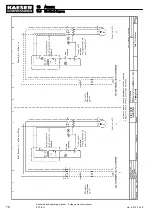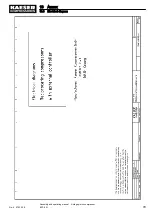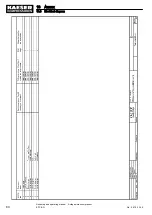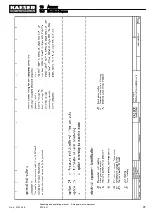
12 Decommissioning, Storage and Transport
12.1 De-commissioning
De-commissioning is necessary, for example, under the following circumstances:
■ the machine is temporarily not needed,
■ the machine is to be moved to another location,
■ the machine is to be scrapped.
Temporary de-commissioning
Precondition The machine can be started at regular intervals.
➤ Run the machine once a week under load for at least 30 minutes to ensure corrosion protection.
Permanent de-commissioning
Precondition The machine must have run for at least 30 minutes before before permanent de-commissioning.
The mains disconnecting device is switched off.
The disconnecting device is locked in the off position.
A check has been made that no voltage is present.
Machine fully vented (no pressure).
1. Allow the machine to cool down completely.
2. Spray the valves and cylinder bore with Shell Ensis 20 preserving oil.
The oil does not need to be removed when re-commissioning.
3. Disconnect all air and electrical connections.
4. Spray all contacts and terminals with a preservative (e.g. Rivalto, W.S.X.).
12.2 Packing
A wooden crate is required for overland transport to protect the machine from mechanical damage.
Consult KAESER Service for advice on packing for sea or air transport.
Material Desiccant
Plastic sheeting
Wooden transport crate
Precondition The machine is decommissioned.
Machine is dry and cooled down.
1. Wrap the machine in plastic sheeting.
2. Place sufficient desiccant (e.g. silica gel) inside the plastic sheeting.
12.3 Storage
Moisture can lead to corrosion, particularly on the surfaces of the compressor block.
12 Decommissioning, Storage and Transport
12.1 De-commissioning
66
Assembly and operating manual 2-stage piston compressor
EPC-2-G
No.: 9_5753_04 E
















